Arsenal and Leicester City came to this match with contrasting moods. The Gunners won their last four matches in all competitions; scored 10 and only conceded one in the process. Oppositely, the Foxes only won once in their recent five games, including an FA Cup exit from Chelsea.
With only five points difference from fifth-placed Manchester United, Arsenal were in a need of a win to climb up in the Premier League and get closer to the European zone. Their mission started well, credit to the first-half strike by Pierre-Emerick Aubameyang. However, Eddie Nketiah’s expulsion proved too costly for the home side. Leicester capitalised on the one-man advantage and managed to equalise late in the game. Without further ado, this tactical analysis will inform you how the match unfolded.
Lineups
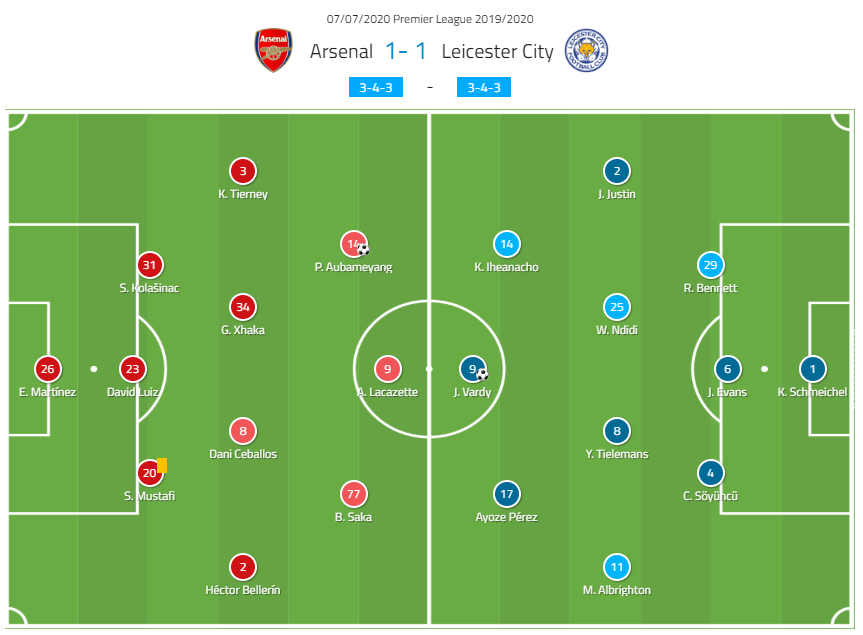
Mikel Arteta once again lined up his team in 3–4–3, a shape which helped his team to win their previous three matches. The trio of Shkodran Mustafi, David Luiz, and Sead Kolašinac was chosen to start in the heart of Arsenal’s defence. In front of them, Dani Ceballos and Granit Xhaka provided support and balance for the home side. Talisman Alexandre Lacazette led the frontline with Bukayo Saka and Aubameyang next to him. Meanwhile, their dugout was filled by names like Lucas Torreira, Ainsley Maitland-Niles, Joe Willock, and Nketiah.
Oppositely, Brendan Rodgers somehow picked up the similar 3–4–3 formation. In fact, Leicester previously have only played about 366 league minutes in a back-three/back-five system. The regular duet of Jonny Evans and Çağlar Söyüncü was supported by first-time starter Ryan Bennett in front of Kasper Schmeichel. Up top, marksman Jamie Vardy was flanked by Ayoze Pérez and Kelechi Ịheanachọ to break Arsenal’s defence. Names like Demarai Gray, Harvey Barnes, Dennis Praet, and veteran Christian Fuchs had to start the game from the bench.
Leicester’s aggressive pressing
As usual, Rodgers deployed a rather aggressive defensive approach for his team. He instructed his men to press in a mid-high 5–2–3 with more focus on central spaces. In the particular shape, the Filberts were trying to match Arsenal’s number at the back, especially in the central lanes.
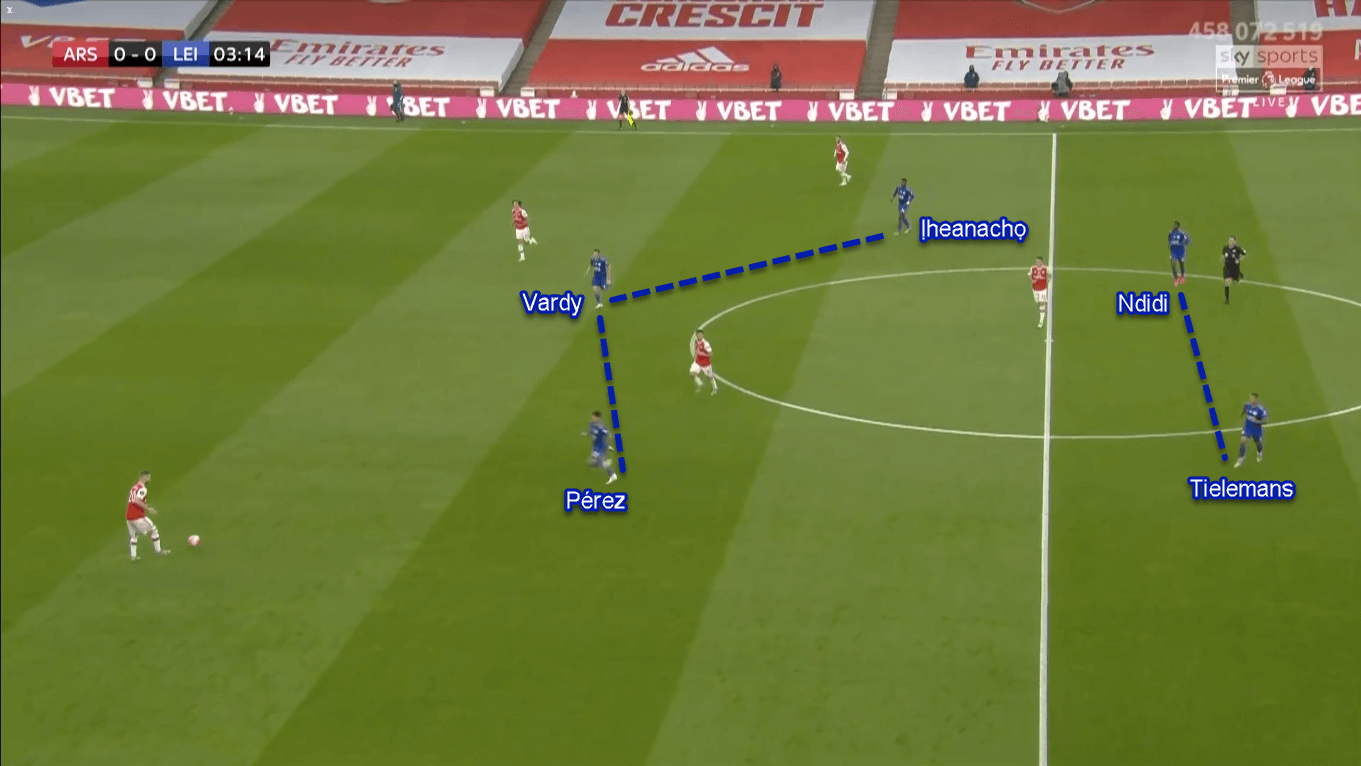
It meant that the forward trio would come close and press the three Arsenal centre-backs. Behind them, Youri Tielemans and Wilfred Ndidi were tasked to close Ceballos and Xhaka respectively. They usually would leave the Gunners’ wing-back pairing free in their first phase of pressing.
If Arsenal tried to play from the flank, Leicester’s ball-side wing-back would step up and press the Arsenal’s flank player. Sometimes they would even do this rather aggressively. It means that the man tasked to press would arrive even before the Arsenal’s wing-back had received the ball. By doing so, it limited the home side’s wing-back time and space to control the ball comfortably.
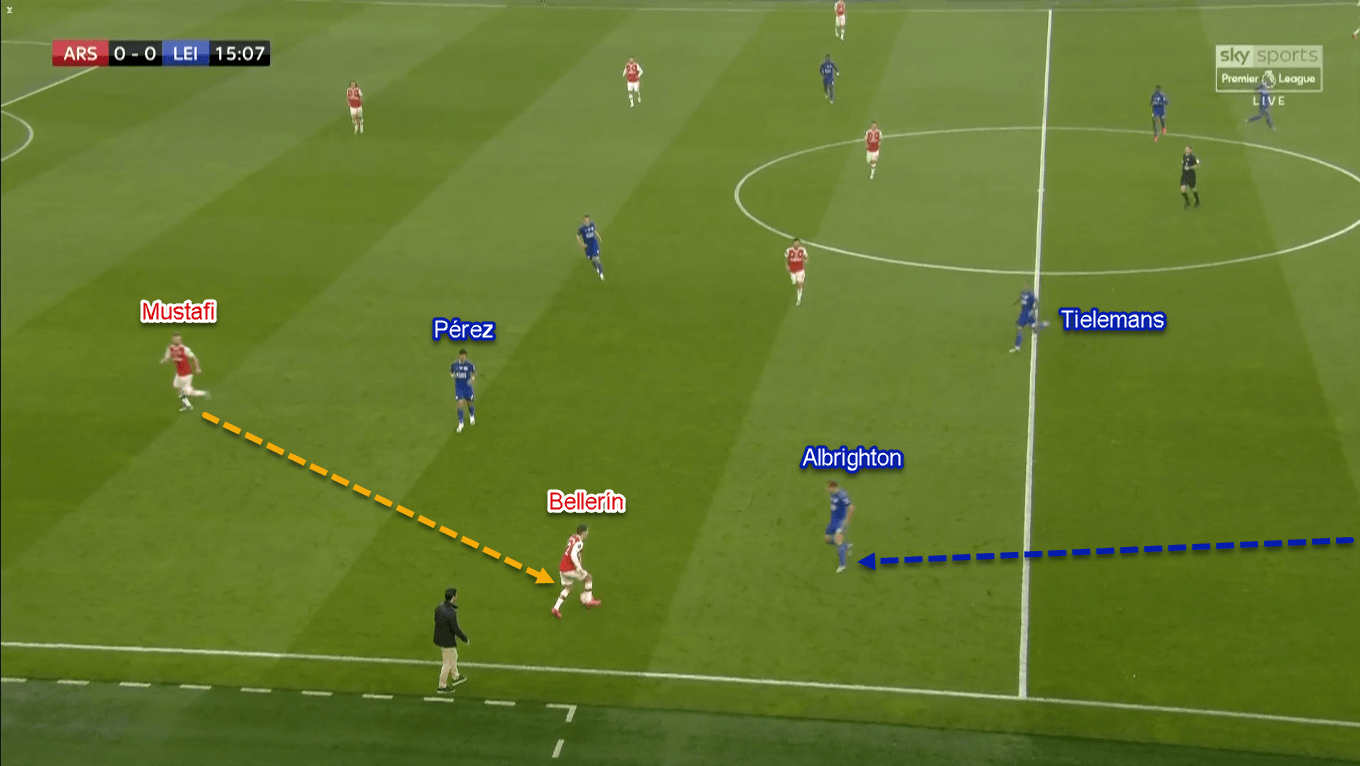
Leicester particularly targeted Bellerín — the right wing-back—in this scheme, with Albrighton making the press. Why Bellerín? The next part of the analysis will answer this question.
Arsenal smartly escaped Leicester’s pressure
To escape from the Filberts’ aggressive pressing game, Arteta deployed an interesting set of tactics. First of all, he would shift his back-three/back-five to a temporary back-four. In the process, left centre-back Kolašinac would drift diagonally and play in the same horizontal line to Bellerín.
That move by the Serbian then would allow left wing-back, Kieran Tierney, to bomb forward and play alongside the attackers. By doing so, Tierney could pin James Justin back as well as giving Arsenal more players in advanced areas.
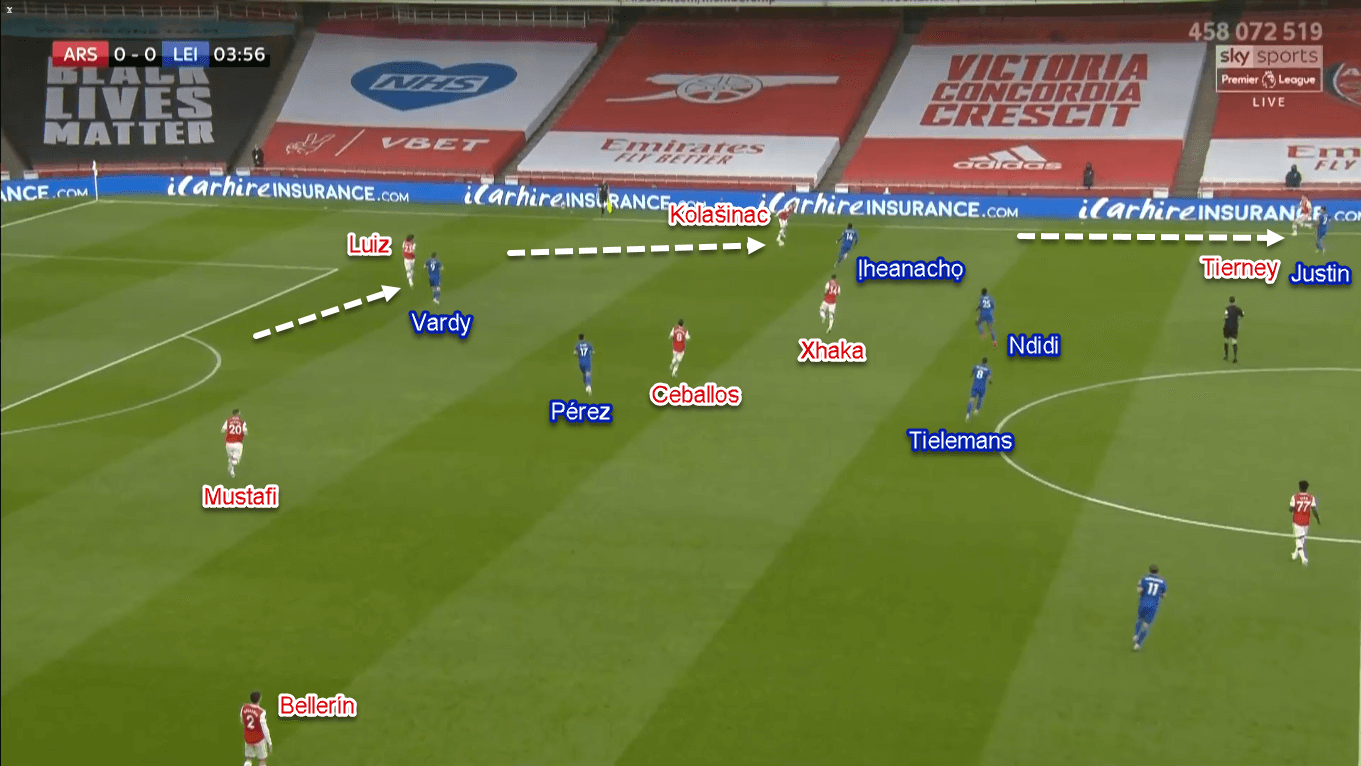
With Kolašinac and Tierney moving out from their positions, Arsenal could be seen playing in a 4–2–4-ish shape with the ball. The shape would allow Arsenal to have six players in their early build-up phase against Leicester’s only five. This numerical advantage was important to help the Gunners progress the ball.
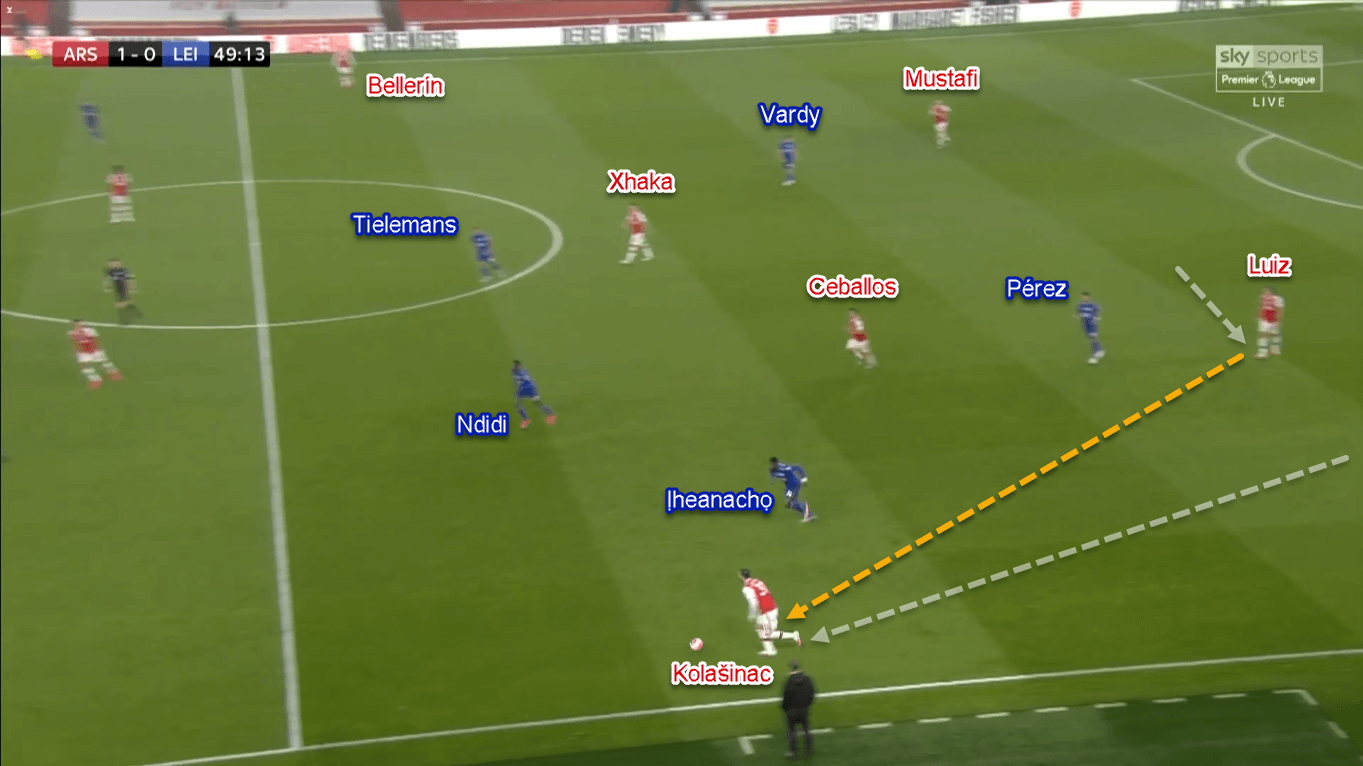
After escaping from Leicester’s aggressive press, Arsenal would try to play more directly. This means that the home side would rarely use their midfielders to build their attacks. If we look at the stats, Xhaka only made 32 passes (82.05% accuracy) in this game. Meanwhile, Ceballos just managed to make 31 passes (81.57% accuracy) – one fewer than his partner.
In fact, Xhaka’s average completed passes per 90 minutes in the league is 59.18 passes, with an 89.5% success rate. On the other side, Ceballos’ tally stands at 55.59 completed passes in every 90 league minutes with 87.3% accuracy. These stats prove that both players’ passing abilities were not the main weapon for Arsenal in this match.
Lacazette = pivotal
So, who did Arsenal utilise in their offensive tactics? It was Lacazette. The Frenchman was mainly used to receive vertical or diagonal balls from Arsenal’s deeper players. Usually, Lacazette would drop from his position while facing his own goal when receiving the ball.
It was a good choice for Arsenal as Lacazette has a supreme upper-body strength that helped him to hold the ball brilliantly against Leicester’s following centre-back. Upon receiving, the centre-forward would have multiple options. First, he could send through-passes in behind for his attacking comrades. Such type of pass was crucial because the home side have pacey attackers like Aubameyang and Saka.
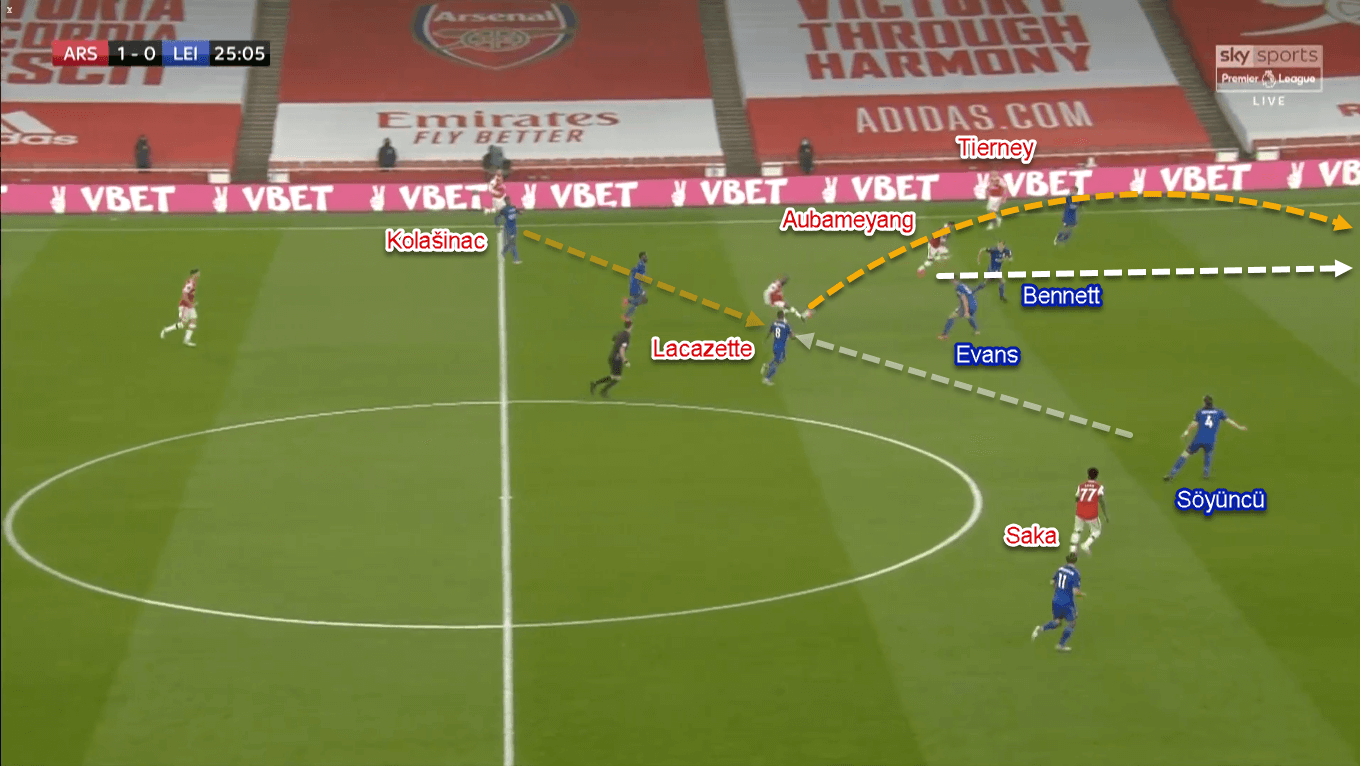
If Lacazette couldn’t make a vertical pass, he could vary his approach by switching the ball to the other side. It doesn’t stop there. He could also make a short return pass and allow the midfielders to provide the diagonal balls.
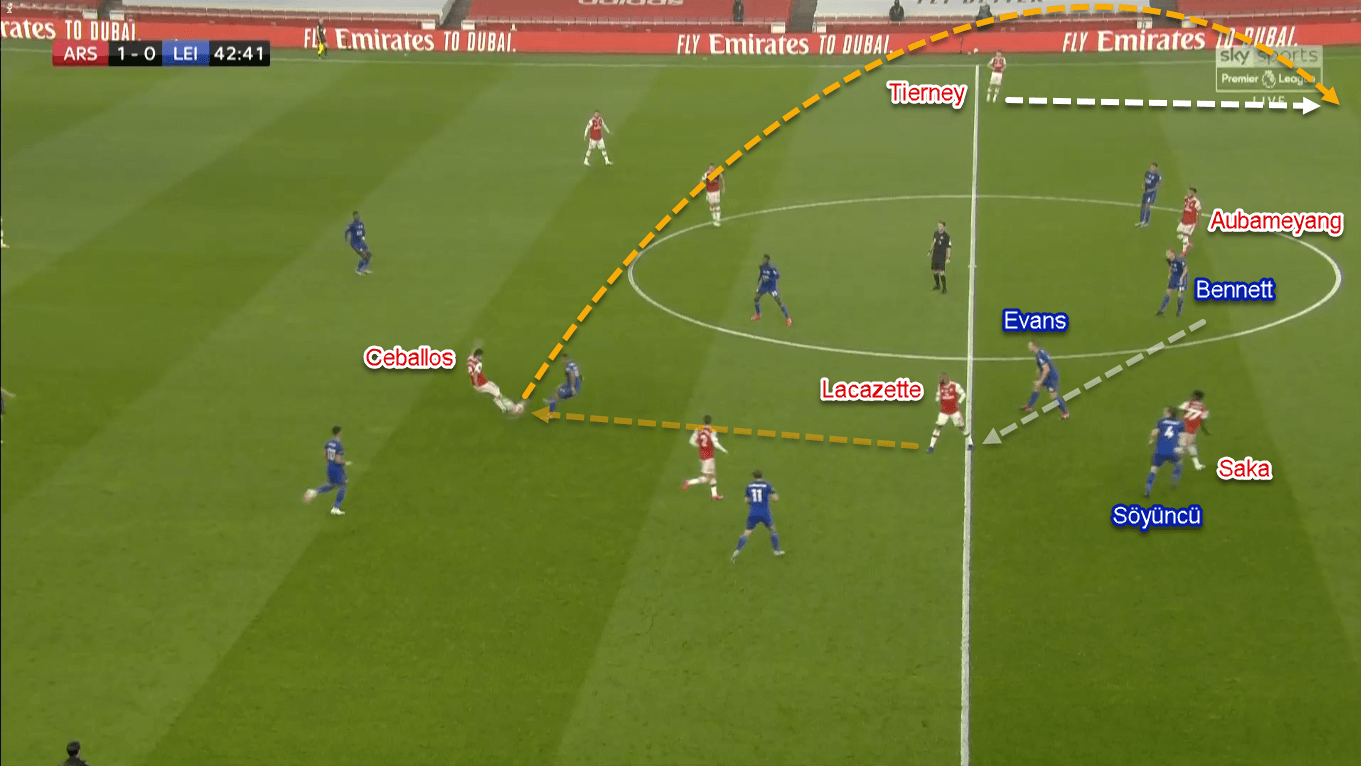
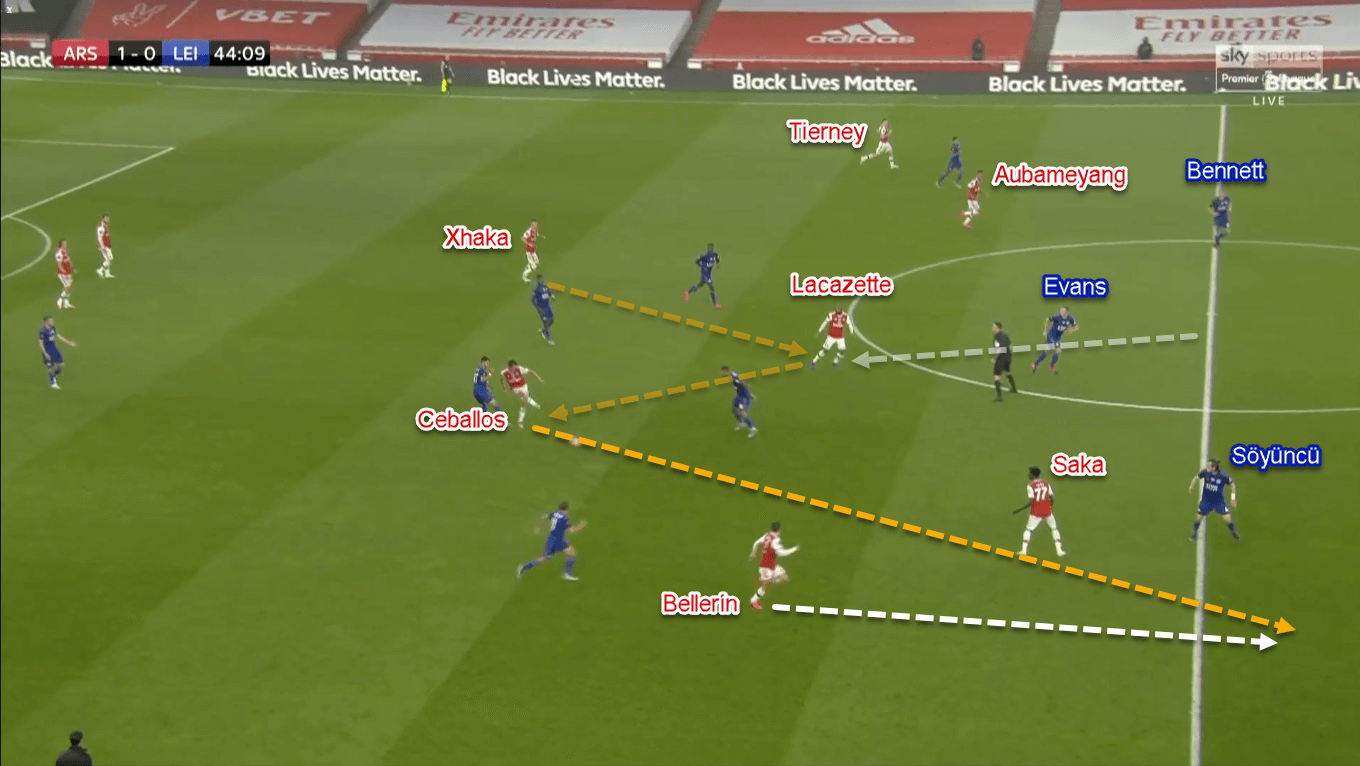
As a matter of fact, Lacazette finished the match with three attempted through passes: the most in Arteta’s armada. Not only that, the statistics show that he had also attempted six forward passes with a 50% success rate. Quite a respectable feat for a centre-forward.
The Foxes’ diagonal play (part one)
Even with a goal advantage, Arsenal didn’t want to sit back and give Leicester all the time to attack. Instead, they also set up a rather-aggressive pressing system. In the process, Arteta would set his team up in a 5–1–3–1-ish shape. Their main objective was similar to Leicester’s: to match the opponents’ number at the back, thus preventing them to build smoothly from the back.
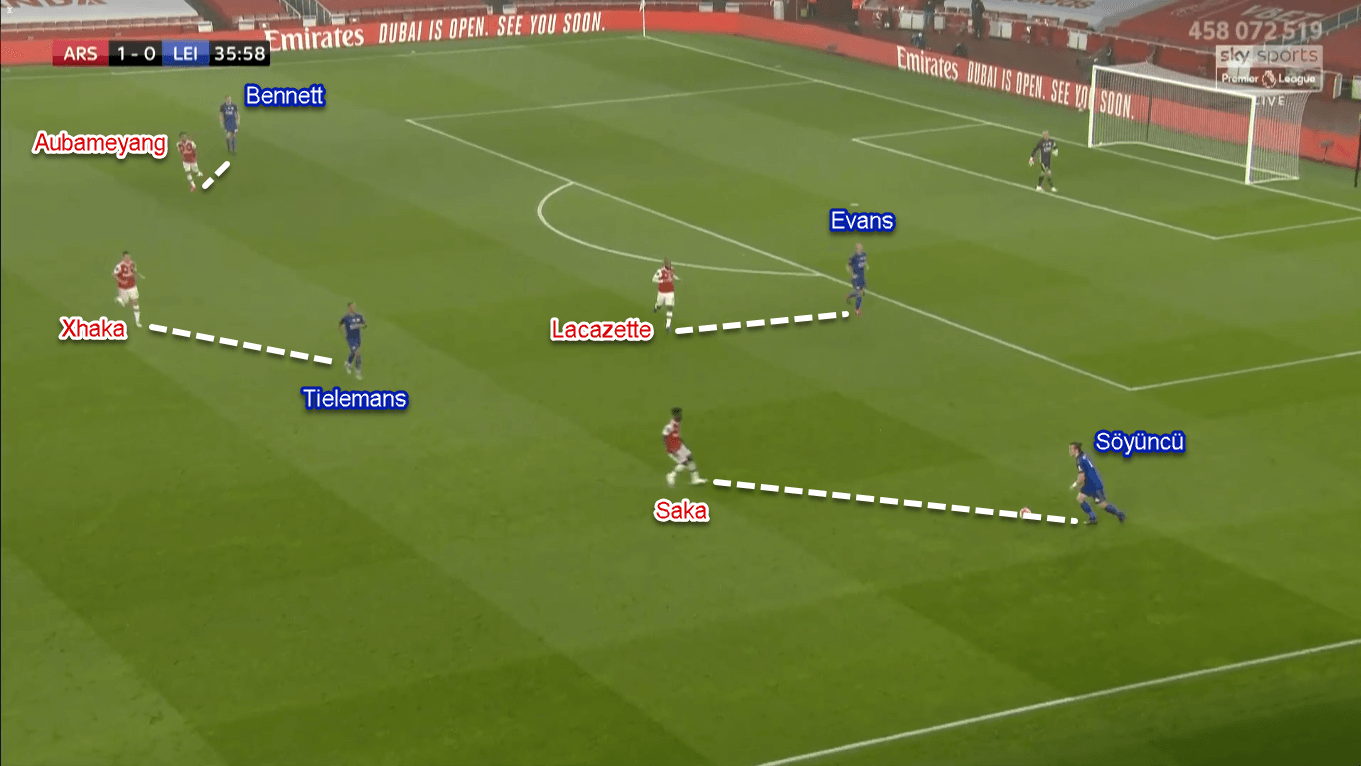
Yet, Rodgers responded interestingly. Quite often he would send middle centre-back Evans forward and stand in parallel with Ndidi in Leicester’s goal-kicks. The reason behind this was to prevent Lacazette and Arsenal’s forward line to press more aggressively. This set-up would also give outside centre-backs Söyüncü and Bennett more space and time with the ball.
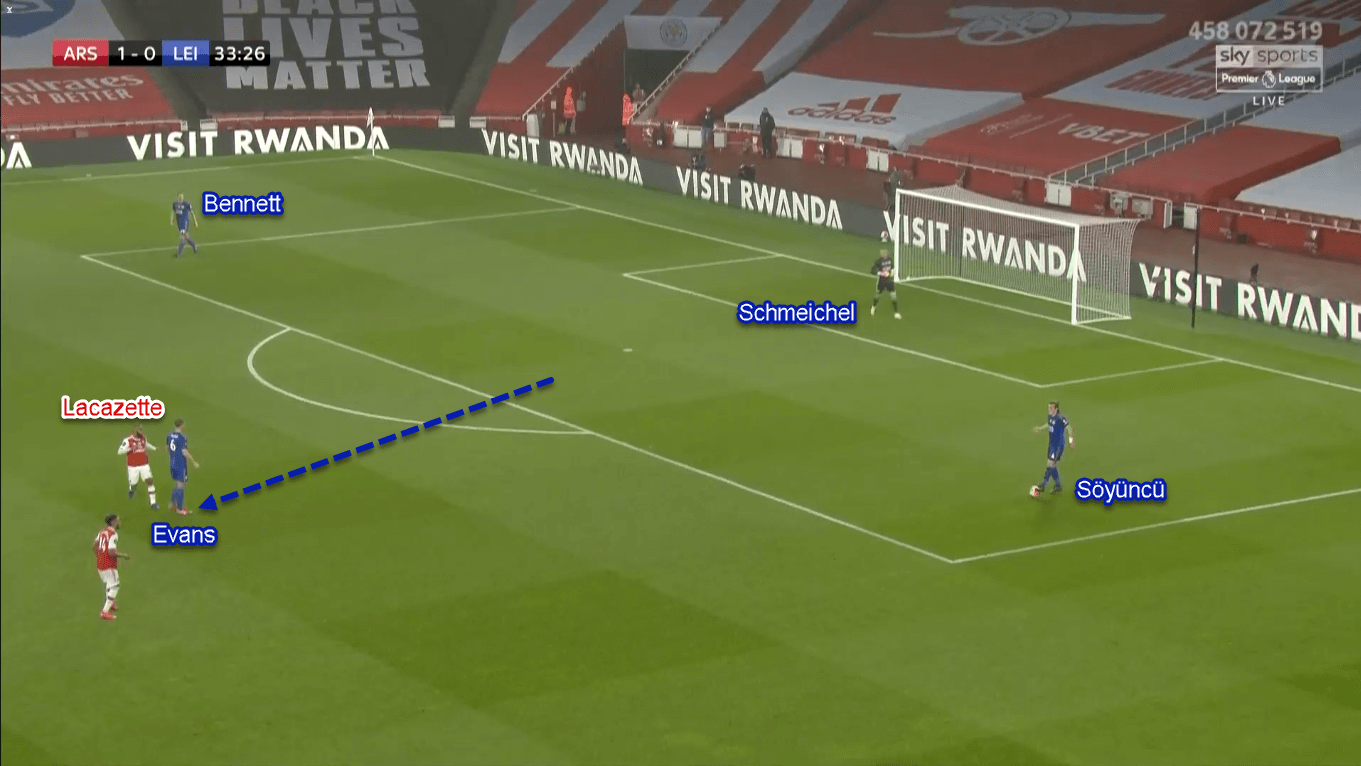
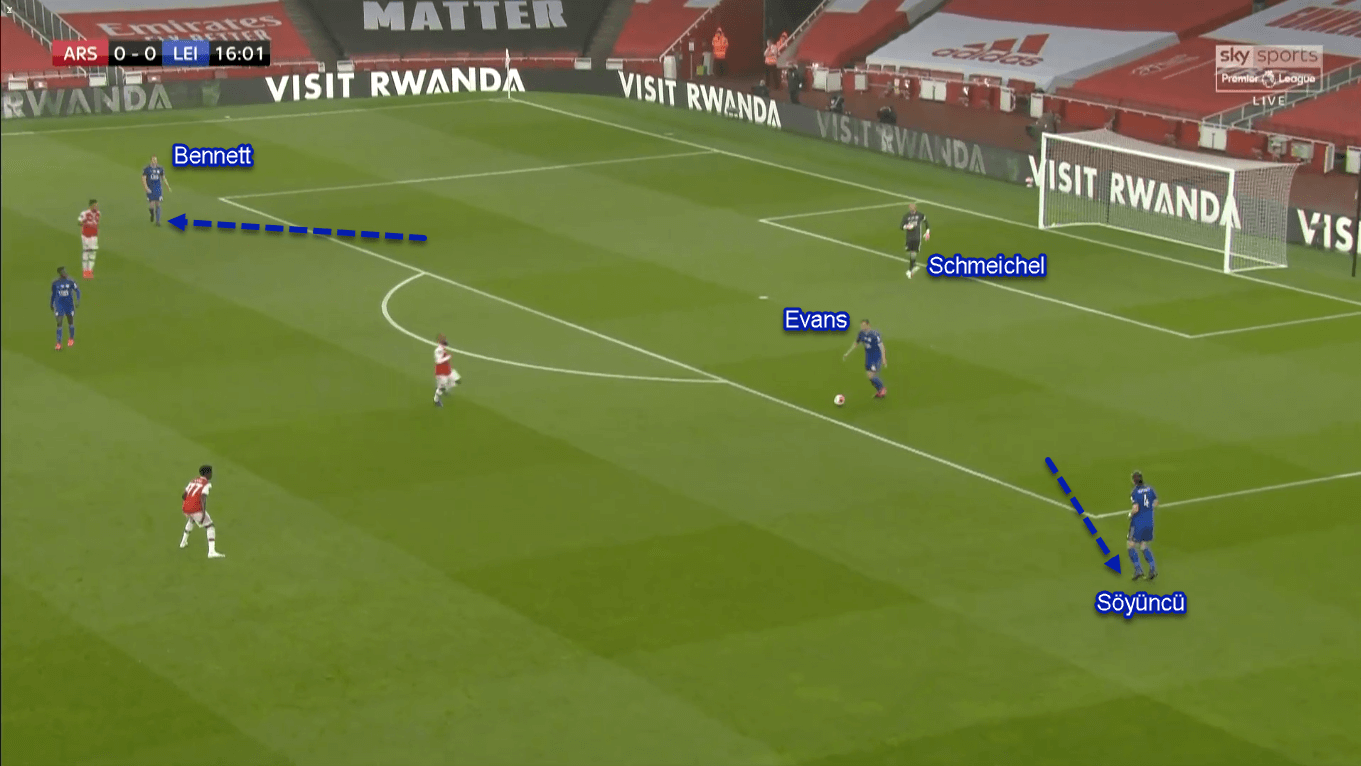
The interesting points don’t stop there. Rodgers would also ask his centre-back trio to spread wide, even from one flank to another. By doing so, they could be positioned closer to their respective wing-back. This was important because the wide areas would be used to launch Leicester’s diagonal play.
Leicester’s diagonal play continued by the centre-back or wing-back sending a diagonal ball to space in between the lines. The target was one of Leicester’s dropping attackers, who will spread the ball to the other flank just after receiving.
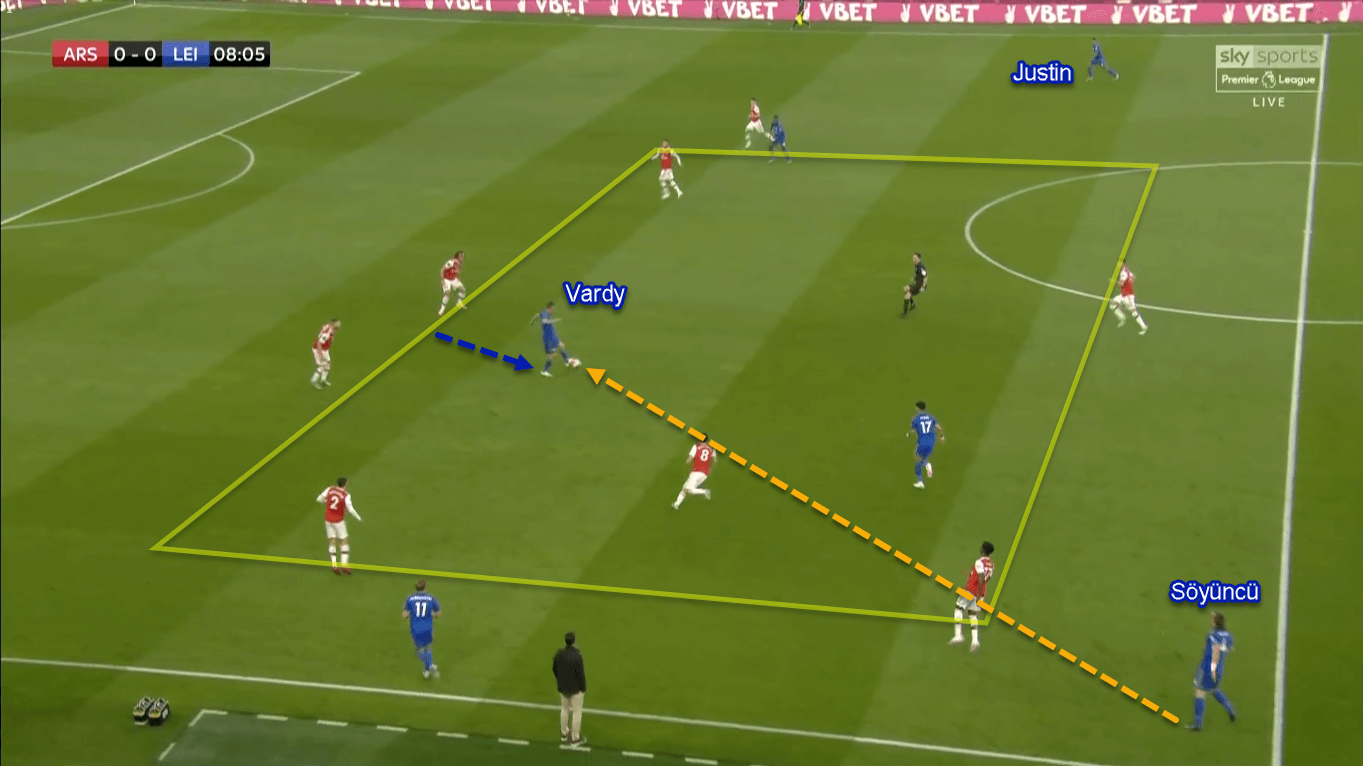
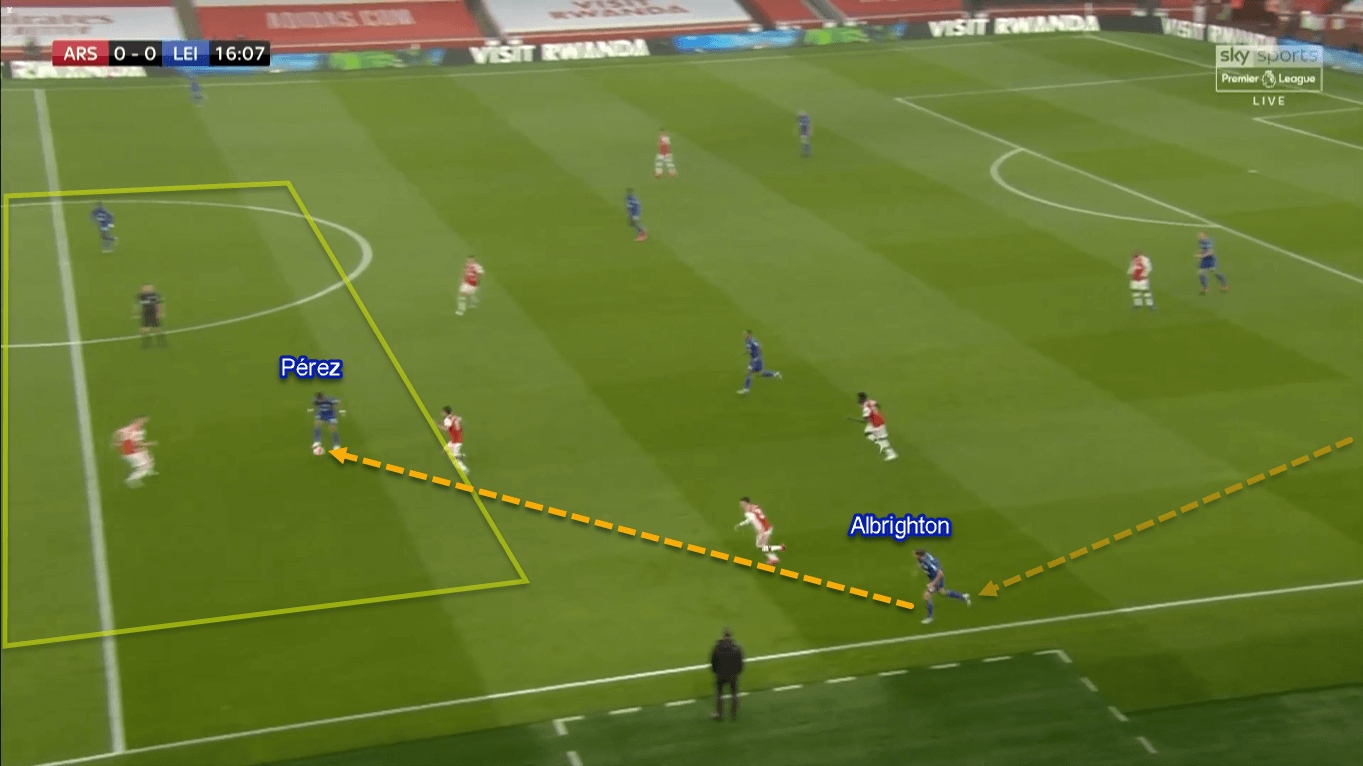
The Foxes’ diagonal play (part two)
Another feature in Leicester’s diagonal play was by using one of the midfielders. Instead of staying central, either Tielemans or Ndidi could drift wide to receive from the centre-back. Their movements then provoke another chain of movements. The nearby wing-back could bomb forward, then the winger could come inside to receive the diagonal pass.
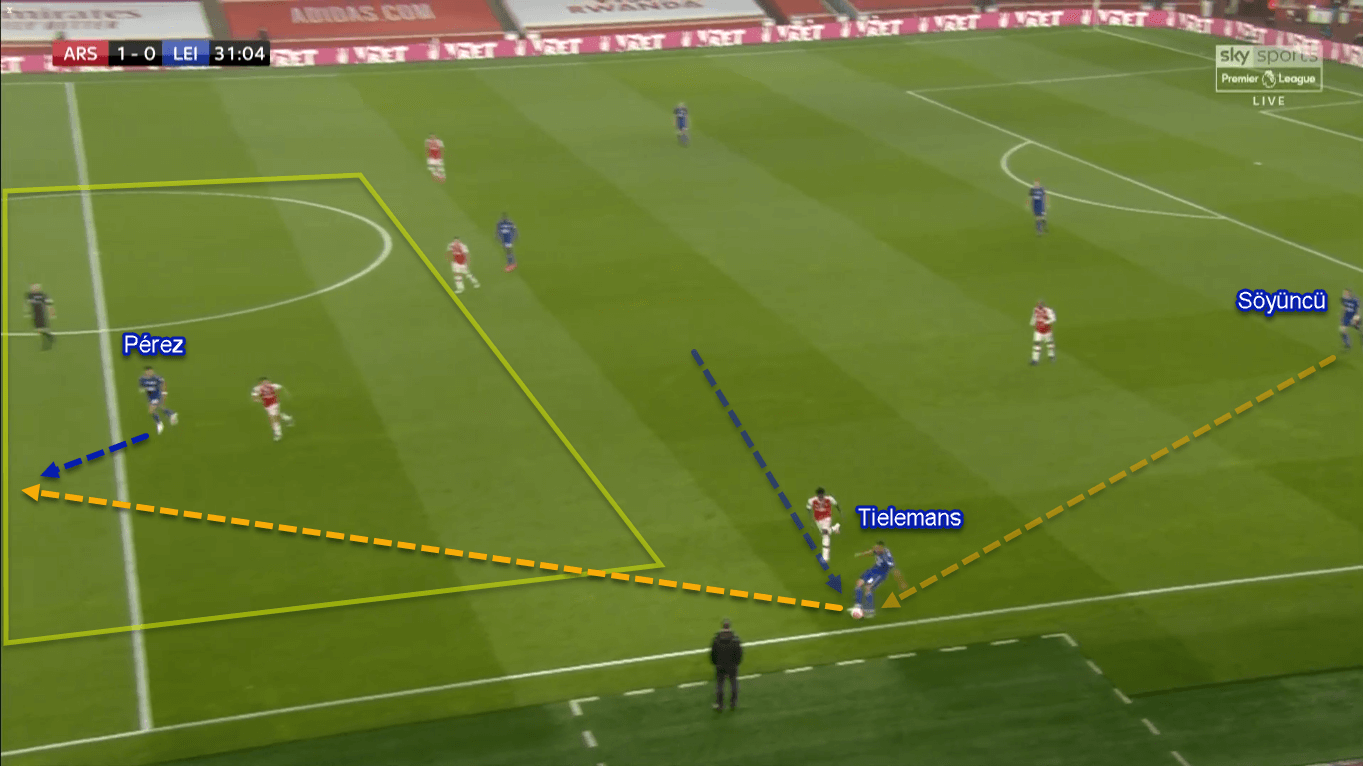
Sometimes Leicester also tried to play more directly. It means that they would abandon the flank player as well as the ‘diagonal play’. In the process, the on-ball centre-back could send a vertical pass to the tucked-inside attacker on his own.
However, Arsenal responded to this quite brilliantly. Arteta would ask the nearest centre-back to aggressively press Leicester’s dropping attacker. By doing so, the man in blue wouldn’t be able to receive the ball with much comfort. The statistics show that Kolašinac won 10 (83.33%) of his defensive duels. Mustafi added five (71.42%) to further underline the successful defensive tactic.
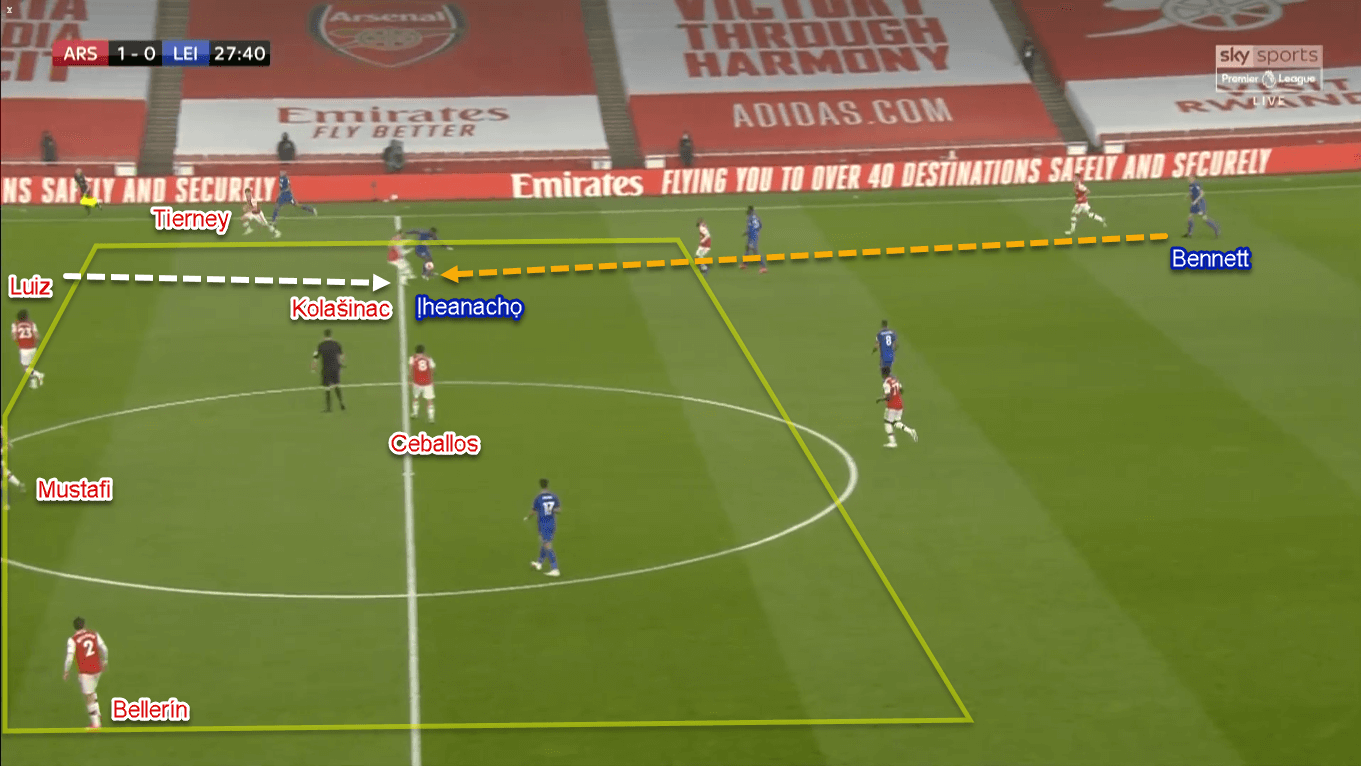
Leicester’s counter-attacks
The Filberts are known as a notorious team in the transitional phase. It shows by their eight counter-attacking goals in the Premier League so far – second only to Liverpool’s nine. This game also displayed Rodgers’ creativity in utilising counter-attacks.
The first way Leicester used them was by splitting the forwards in counter-attacks. This sequence was mostly utilised when the Foxes win the ball in Arsenal’s playing field. After Leicester’s midfielder(s) wins the ball back, one of them would serve one of the attackers with an incisive pass to the flank area.
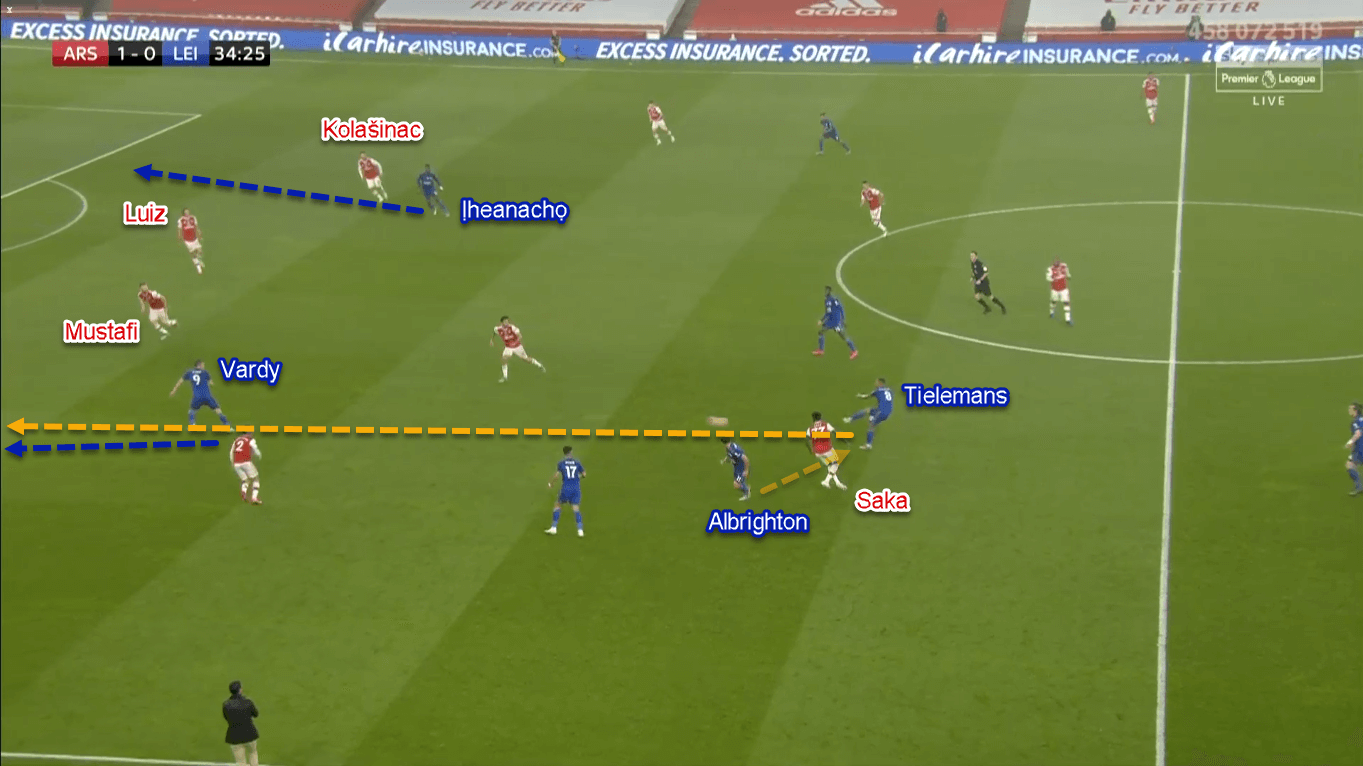
With splitting forwards, Leicester would have both of their attackers playing in the blindside of Arsenal’s outside centre-backs. The on-ball attacker — mostly Vardy — then could send a cross for his comrade in the far-side. Looking at the stats, the Englishman finished the game with two (67%) successful crosses – the most from the visitors.
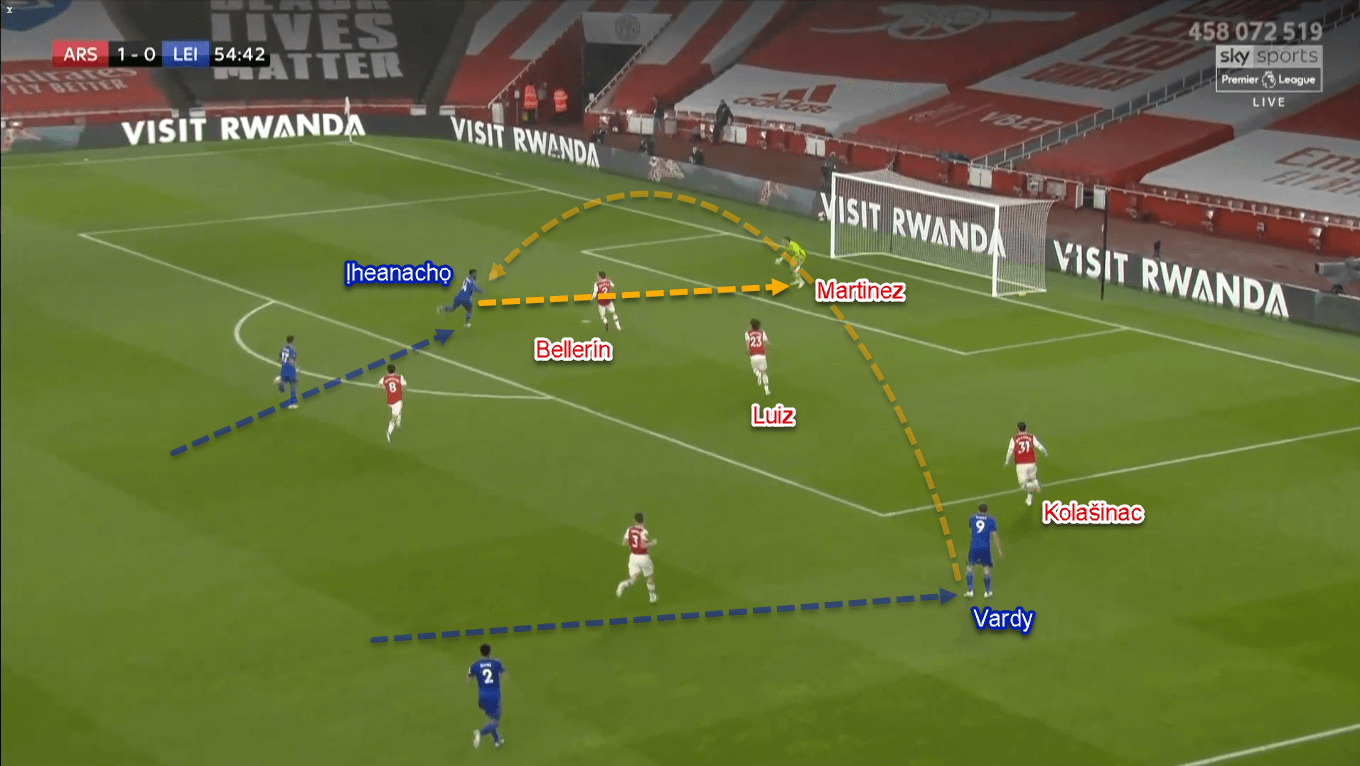
Another way Leicester tried to attack Arsenal in transition was when they win the ball in their own playing field. In this process, the attackers would be served with an aerial through ball in behind Arsenal’s backline. Unluckily for Leicester, Arsenal had the daredevil, Emiliano Martinez. The goalkeeper would happily come out from his goal to sweep the aerial ball.
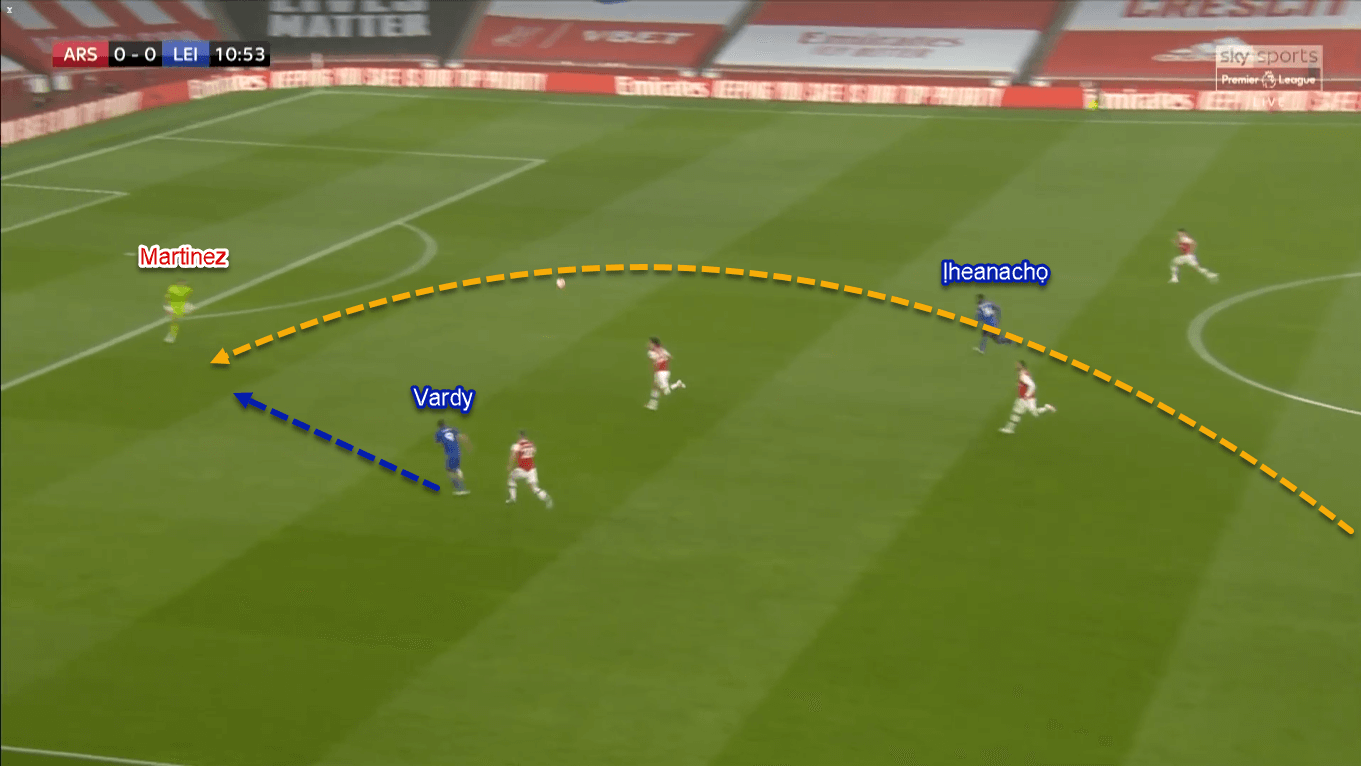
After the red card
Arteta subbed out Lacazette for Nketiah just 20 minutes before the final whistle. Yet the replacement only lasted for two minutes on the field. Nketiah was sent off after ‘kicking’ a Leicester player, even before allowing himself to kick the ball. Arteta then moved his team to a deep-block 5–3–1. He kept the five-at-the-back to give Arsenal more central solidity against Leicester’s wing play.
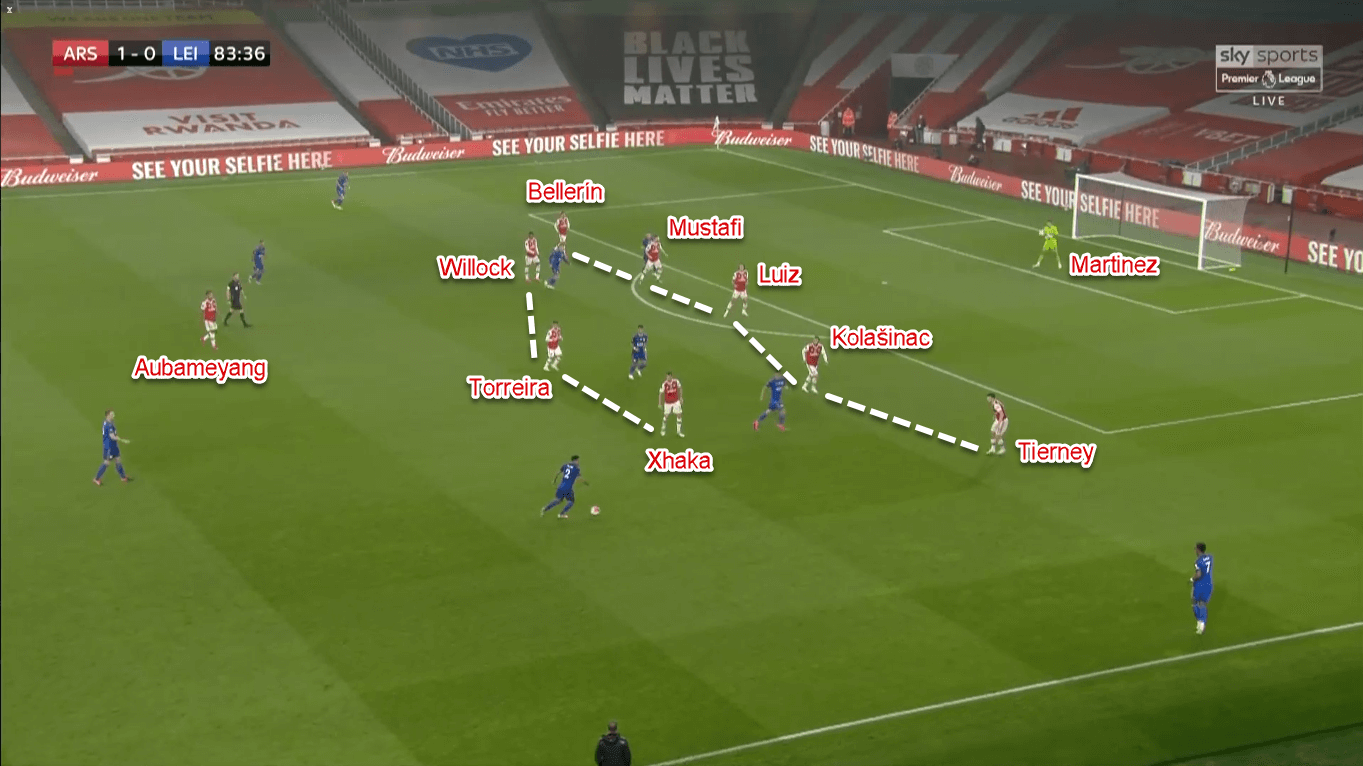
With a one-man advantage and a game to chase, Leicester went on the front foot as Rodgers moved his team to a 2–3–5-ish formation. In that shape, the full-backs had different tasks: Justin was instructed to tuck inside alongside the midfielder, meanwhile, Fuchs was tasked to provide the width in the left flank.
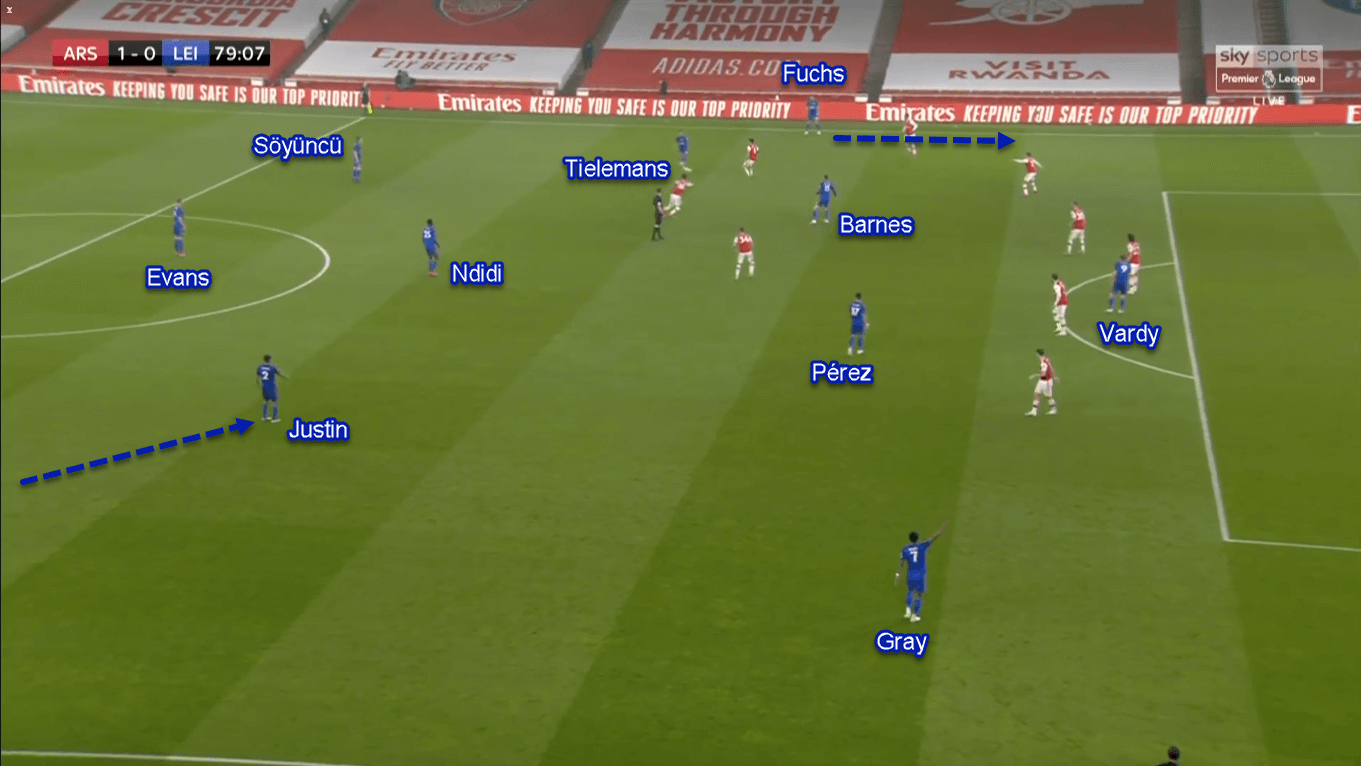
In their new formation, Leicester tried to overload the wide-area, particularly the right flank. To do so, the Foxes used fresher players like Praet and Gray to support Justin and Pérez. The objective behind the flank overload was to free one player before sending a cross inside the box. The approach worked effectively since their equalising goal came from this particular tactic.
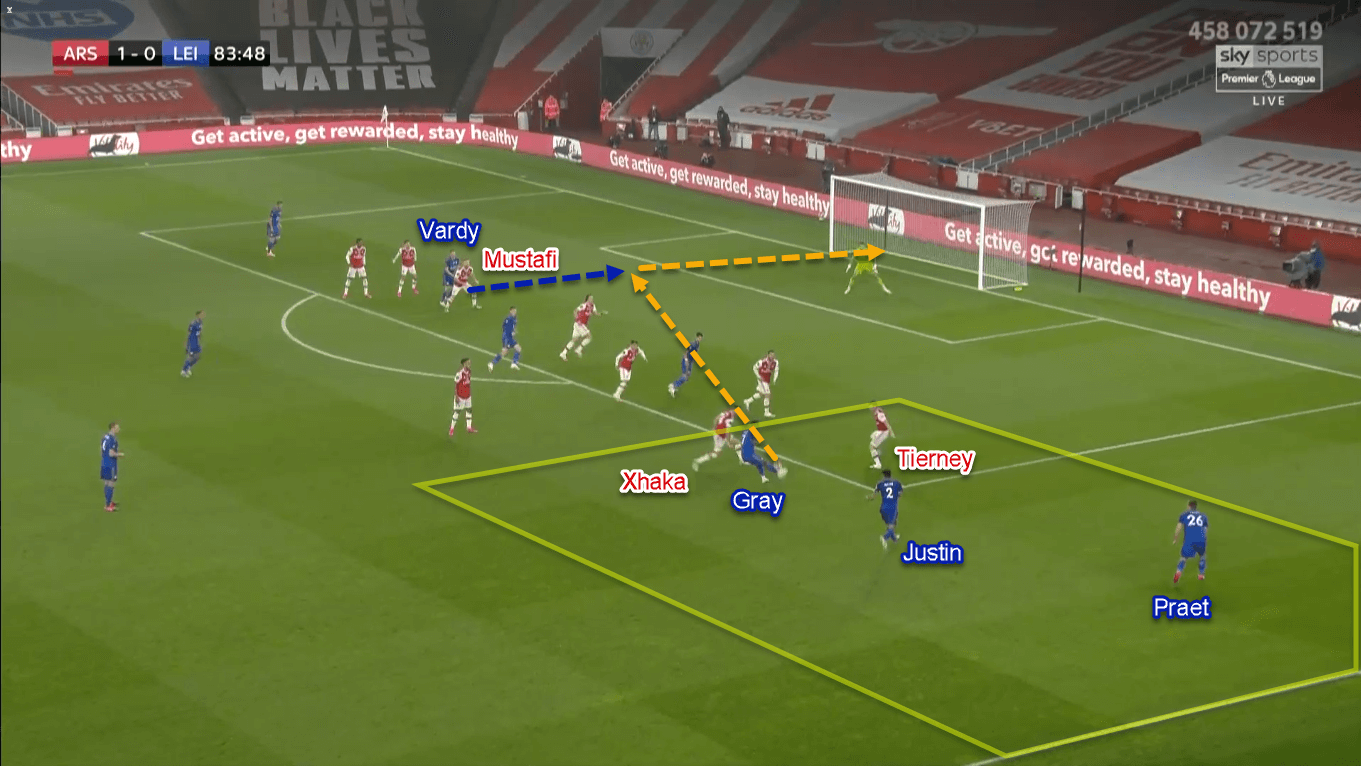
Conclusion
What a thrilling contest. Who would have thought both Arteta and Rodgers would set their teams in a similar 3–4–3? Tactic-wise, this match ticks all the boxes: unpredictable set-ups, creative ways to unlock each other, and adaptability in the latter stage of the game.
Some may say that Arteta was unlucky, but what happened on the pitch says otherwise. The Spaniard’s questionable in-game management was the main reason behind Arsenal’s misery. He subbed out arguably the best Arsenal player in this game for a two-minute cameo. Meanwhile, Rodgers did the opposite. One of his substitutes provided the (controversial) assist to help his team salvage a precious point.
Questions arise after the match: did Pérez touch the ball before Vardy’s goal? Did Leicester deserve the result? To be honest, we don’t know all the answers. One thing we do know: the race for the top four will be more exciting than ever.





Comments